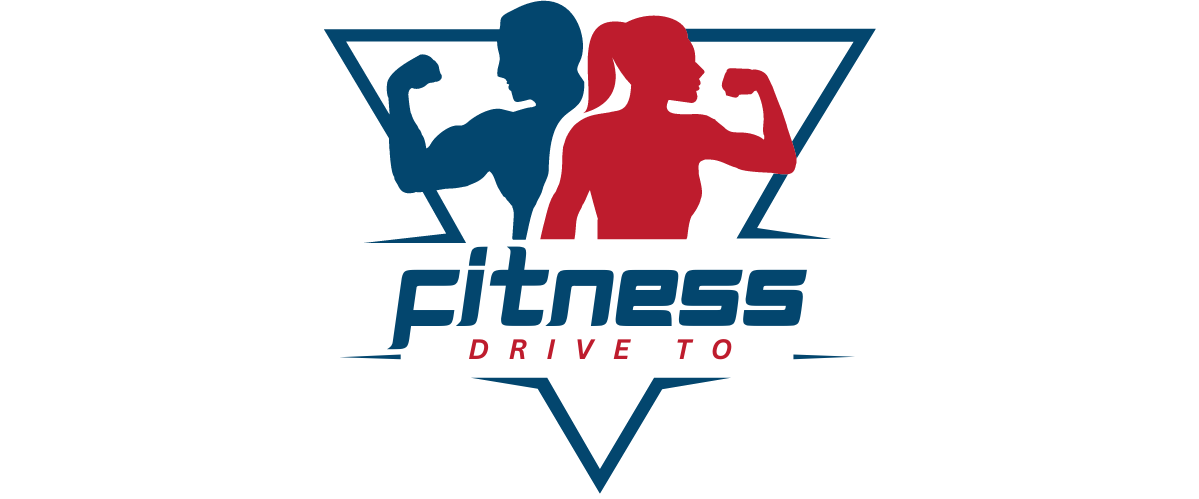Personalization is the key to achieving your fitness goals effectively and sustainably. By crafting a program tailored to your unique needs, preferences, and lifestyle, you can maximize results while minimizing the risk of injury or burnout. This guide will provide you with imperative insights and practical steps to create a balanced physical fitness program that addresses your current fitness level and future aspirations. Whether you’re a beginner or an experienced athlete, you’ll find strategies to enhance your workout experience and propel you toward success.
Key Takeaways:
- Assess Your Goals: Identify your fitness objectives, whether it’s weight loss, muscle gain, or improving endurance.
- Establish a Routine: Create a schedule that incorporates various workouts to ensure consistent exercise throughout the week.
- Mix Different Disciplines: Combine strength training, cardio, and flexibility exercises for a well-rounded fitness program.
- Track Progress: Regularly monitor your performance and make adjustments to your program based on results and personal comfort.
- Stay Motivated: Find ways to keep your workouts enjoyable and engaging, like setting mini-challenges or working out with friends.


Understanding Types of Fitness Programs
The fitness landscape offers various programs to cater to your individual needs. It’s crucial to recognize the main types to determine what suits you best. Here’s a breakdown of common fitness programs:
| Type of Fitness Program | Description |
|---|---|
| Aerobic | Focuses on cardiovascular endurance through activities like running and swimming. |
| Anaerobic | Involves high-intensity activities for short bursts, such as weightlifting. |
| Strength Training | Targets muscle building using resistance exercises. |
| Flexibility Training | Enhances the range of motion through stretching exercises. |
| Balance Training | Improves coordination and stability through various exercises. |
This knowledge empowers you to tailor your fitness journey according to your interests and goals.
Aerobic vs. Anaerobic Training
With aerobic training, you typically engage in sustained exercises that elevate your heart rate, enhancing your endurance. On the other hand, anaerobic training consists of short bursts of high-intensity effort, helping you build muscle mass and strength quickly. Balancing both can lead to improved overall fitness.
Strength Training vs. Flexibility Training
Little do many realize that strength training and flexibility training serve distinct yet complementary purposes. While strength training focuses on increasing your muscle power and endurance, flexibility training emphasizes improved range of motion and injury prevention.
The combination of strength training and flexibility training plays a vital role in a well-rounded fitness program. Strength training not only enhances your muscular strength but also boosts your metabolism. However, neglecting flexibility training can lead to imbalances and a higher risk of injury. By incorporating both, you’ll enjoy the benefits of a more balanced body, improved posture, and enhanced athletic performance. This holistic approach ensures your training is safe, effective, and sustainable over the long term.

Essential Factors to Consider
Clearly, creating your personalized physical fitness program requires you to consider several necessary factors that shape your journey. These include:
- Personal goals
- Current fitness level
- Health status
- Available resources
- Time commitment
Thou must take each of these into account to ensure a comprehensive and effective approach to your fitness.
Personal Goals and Objectives
Clearly, identifying your personal goals and objectives is the first step in customizing your fitness program. Whether you aim to lose weight, build muscle, improve endurance, or enhance overall health, defining these targets will guide your workout choices and help measure your progress effectively.
Current Fitness Level and Health Status
Assuming you understand your current fitness level and health status is vital for developing a safe and effective fitness program. Take note of your endurance, strength, flexibility, and any health issues such as injuries or chronic conditions that might affect your workouts.
Factors influencing your current fitness level include your exercise history, daily activity, and any pertinent medical conditions. If you have been sedentary for a while, starting with low-intensity exercises is ideal. Alternatively, if you possess a strong fitness foundation, you may ramp up intensity safely. However, if you are dealing with injuries or medical concerns, it is advisable to consult a healthcare professional before initiateing on a new exercise program to avoid exacerbating any issues.
Step-by-Step Guide to Creating Your Program
Many individuals struggle with formulating a fitness program that caters to their unique needs and preferences. To succeed, you must embrace a structured approach. Below are necessary steps to guide you through creating your personalized fitness plan.
| Step | Description |
| 1 | Assess your current fitness level. |
| 2 | Set realistic and achievable goals. |
| 3 | Choose the right exercises. |
| 4 | Create a balanced routine. |
| 5 | Monitor your progress regularly. |
Setting Realistic Goals
Clearly, your fitness journey begins with setting practical goals that align with your potential. Aim for specific, measurable, attainable, relevant, and time-bound (SMART) objectives to boost your motivation and track your progress effectively.
Choosing the Right Exercises
StepbyStep, selecting the right exercises is necessary in your fitness program. Consider your personal preferences, fitness level, and any limitations you may have. This ensures your routine is enjoyable and sustainable, making it easier to stick with over time.
It’s important to include a mix of cardio, strength training, and flexibility exercises in your routine. Focus on functional movements that promote overall strength and core stability. Be cautious with high-impact exercises if you have existing injuries, as they can lead to setbacks. Choose activities that you enjoy to foster long-term commitment—whether it’s dancing, running, or weightlifting, find what keeps you motivated and engaged.
Tips for Staying Motivated
After you establish your fitness program, staying motivated is key to reaching your goals. Consider the following tips to maintain your enthusiasm:
- Set realistic and achievable goals
- Mix up your routine to keep it interesting
- Celebrate your successes, no matter how small
- Utilize social media or fitness apps for community support
Knowing how to stay engaged will help you stick to your program long-term.
Tracking Progress
Little achievements can lead to significant changes over time. Keep a journal or use apps to log your workouts, noting sets and reps. This visibility allows you to see your progress and adjust your program as necessary, maintaining your motivation.
Finding a Workout Buddy
On your fitness journey, having a workout buddy can significantly enhance your motivation. Partnering up provides accountability and shared goals, making workouts more enjoyable.
For instance, having a workout buddy can help you stay committed to your routine, as they can encourage you to push through tough days. Additionally, you can share tips and support each other when facing challenges. This camaraderie also adds an element of fun to your workouts, making it less likely you’ll skip sessions. Working out together can lead to a stronger bond while simultaneously achieving fitness goals.
Pros and Cons of Various Training Methods
Despite the wide range of training methods available, each has unique pros and cons that you should consider when designing your personalized fitness program. Understanding these benefits and pitfalls will help you make informed decisions and tailor your approach to suit your needs. Below is a quick overview:
| Training Method | Pros and Cons |
|---|---|
| High-Intensity Interval Training (HIIT) | Pros: Efficient, quick workouts. Cons: Can be taxing on the body. |
| Traditional Weightlifting | Pros: Builds strength, muscle consistency. Cons: Requires equipment and knowledge. |
| Yoga | Pros: Improves flexibility and stress relief. Cons: Slower results for strength. |
| Pilates | Pros: Core strength and stability. Cons: Equipment may be needed. |
| Cardio | Pros: Excellent for weight loss and heart health. Cons: Minimal muscle gain. |
| CrossFit | Pros: Community-driven, varied workouts. Cons: Risk of injury. |
| Bodyweight Training | Pros: No equipment needed, versatile. Cons: Limited for advanced strength. |
| Functional Training | Pros: Practical movements for daily life. Cons: Can be less structured. |
| Outdoor Activities | Pros: Engaging and enjoyable. Cons: Weather-dependent. |
| Group Classes | Pros: Motivation from peers. Cons: Less personalization. |
For more details on how to select the right approach, check out The Ultimate Guide to Building a Workout Plan That Suits Your Needs.
High-Intensity Interval Training (HIIT)
On most occasions, HIIT workouts deliver maximum results in minimal time. This method alternates between short bursts of intense activity and periods of rest, helping to burn calories efficiently and promote cardiovascular health. HIIT can be a great fit if you have a busy schedule and are looking for an effective workout.
Traditional Weightlifting
An important aspect of traditional weightlifting is its emphasis on building strength and muscle mass through resistance training. By targeting specific muscle groups, you can achieve significant gains over time. With proper form and technique, you optimize your results while reducing the risk of injury.
Weightlifting is a highly effective training method that can contribute to substantial improvements in your overall physical fitness. It helps you develop increased muscle size, strength, and endurance. However, it’s crucial to pay attention to your form to avoid injuries and understand your limits. Investing time in learning proper techniques and progressively increasing weight can lead to tremendous benefits for your body composition and health. Always consider working with a qualified trainer especially if you are new to weightlifting, as this will help you get the most out of your workouts safely.
Adjusting Your Program Over Time
Keep in mind that fitness is a dynamic journey. As your body adapts and your skills improve, it’s crucial to regularly assess and modify your program to ensure continued progress and to meet your evolving goals. Adjustments can involve adding new exercises, changing intensity levels, or even shifting your focus to different fitness modalities. Staying responsive to your physical and mental state will help maintain motivation and prevent burnout.
Recognizing Plateaus
You may encounter periods where your progress stalls, known as plateaus. These plateaus can be frustrating but are a natural part of your fitness journey. When you notice that your performance or results have stagnated, it’s a signal that you may need to change your routine. This change could involve altering your workout intensity, introducing new exercises, or increasing your frequency. Understanding these signs is crucial for breaking through to the next level.
Incorporating Variety
One effective way to keep your fitness program engaging and productive is by incorporating variety into your workouts. This can mean mixing up your routines with different exercises, altering your workout environments, or varying exercise modalities from strength training to cardio. To maintain motivation and challenge your body, you should also experiment with new classes like yoga, Pilates, or high-intensity interval training (HIIT). Adding variety not only prevents boredom but also helps you avoid overuse injuries by working different muscle groups. Embrace change, and you’ll find staying committed to your fitness journey becomes much easier.
Conclusion
The journey to creating your personalized physical fitness program is one that empowers you to take control of your health. By understanding your goals, preferences, and limitations, you can design a routine that not only engages you but also helps you achieve sustainable results. Be adaptable, keep track of your progress, and don’t hesitate to adjust your program as needed. With commitment and consistency, you will be well on your way to a healthier, fitter you.
FAQ
Q: What are the first steps to creating my personalized physical fitness program?
A: The initial steps involve evaluating your current fitness level and defining your goals. Start by assessing your physical abilities, such as strength, endurance, flexibility, and mobility. Then outline specific, measurable, achievable, relevant, and time-bound (SMART) goals that you wish to accomplish, such as losing weight, building muscle, or improving cardiovascular health.
Q: How can I determine the right exercises for my fitness program?
A: To select the right exercises, consider your fitness goals, preferences, and any limitations you might have. A balanced program includes a mix of cardiovascular exercises, strength training, and flexibility work. Research exercises that target different muscle groups and types of workouts, like high-intensity interval training (HIIT), yoga, or cycling, to ensure variety and engagement in your routine.
Q: How often should I change my fitness program?
A: It’s advisable to review and adjust your fitness program every 4 to 6 weeks. This may involve increasing the intensity, altering exercises, or modifying your routine to overcome plateaus and keep your training stimulating. Make necessary changes based on your progress and continued interest in staying active.
Q: Should I consult a professional when creating my fitness program?
A: While self-guided programs can be effective, consulting a fitness professional or personal trainer can provide valuable insights and guidance. A trainer can help ensure your program is safe, suitable, and effective, offering personalized feedback and adjustments based on your individual needs and goals, especially if you are new to exercising or have specific health concerns.
Q: How can I stay motivated to stick with my fitness program?
A: Staying motivated involves setting realistic goals, tracking your progress, and celebrating milestones along the way. Incorporating fun activities, working out with friends, or participating in group classes can enhance the enjoyment of your fitness journey. Additionally, varying your workouts and allowing for some rest periods can help to prevent burnout and maintain long-term commitment.



